VE Day: People celebrate with bunting and bonfires
- Published
Following the surrender of Germany in World War Two, on 7 May 1945, Prime Minister Winston Churchill declared the following day a public holiday, Victory in Europe (VE) Day.

A Dufaycolor colour transparency of Admiralty Arch, in London
And, after nearly six years of conflict, the public took to the streets to celebrate.
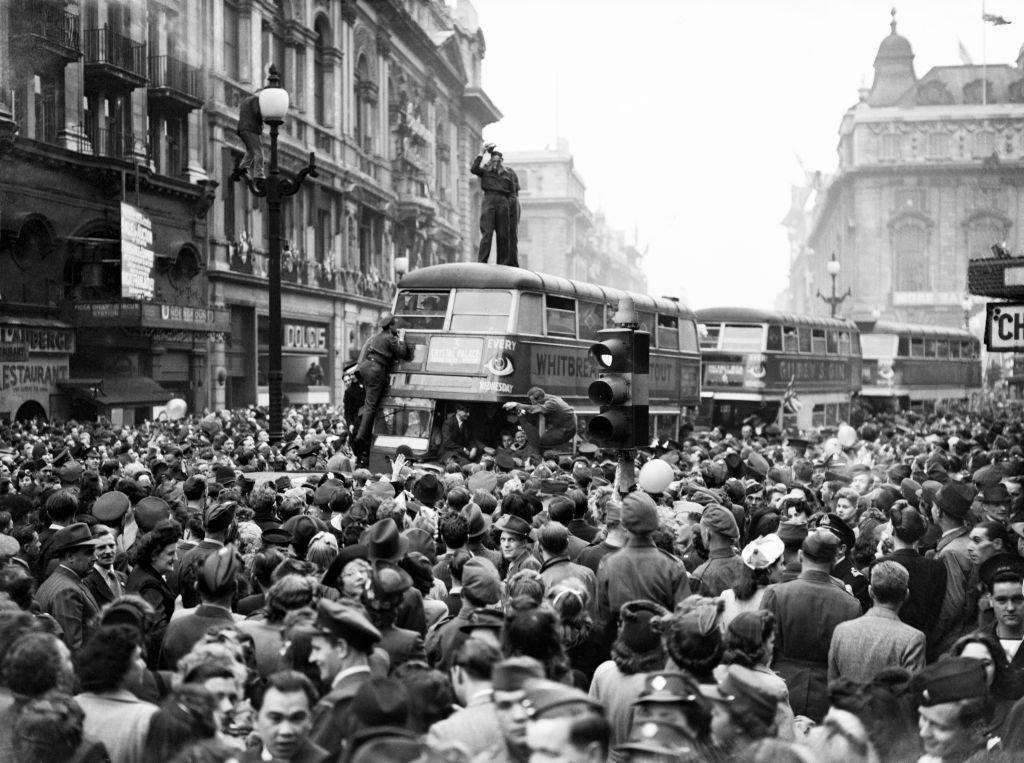
Celebrations in Piccadilly Circus, London
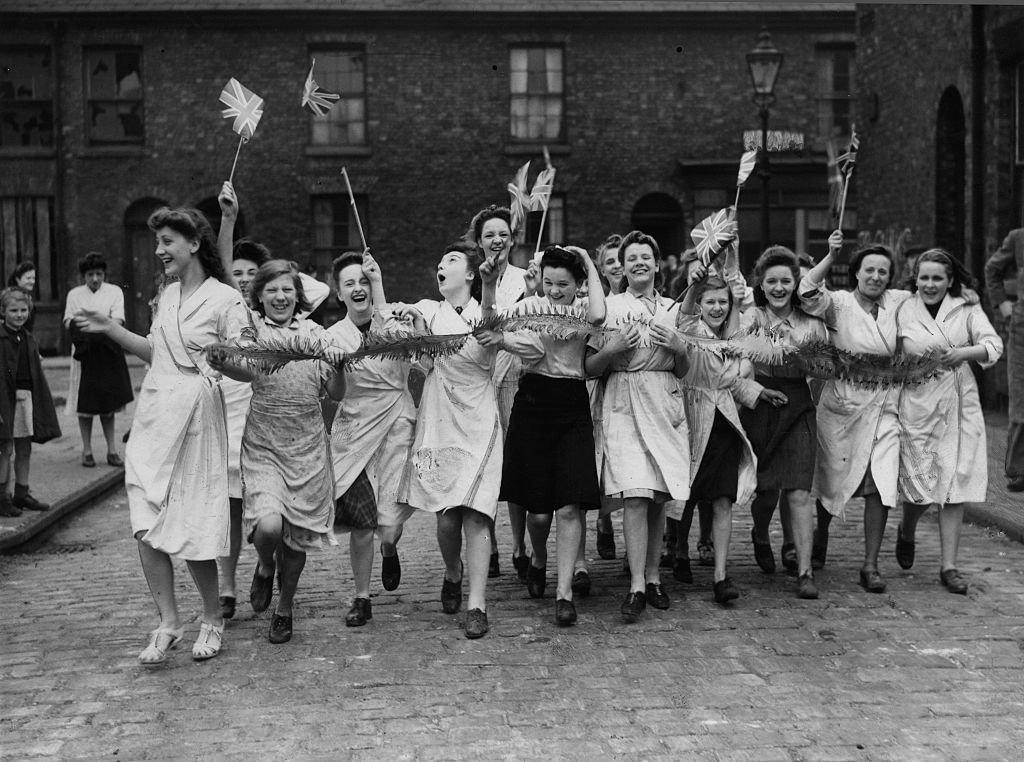
Workers celebrate in Manchester
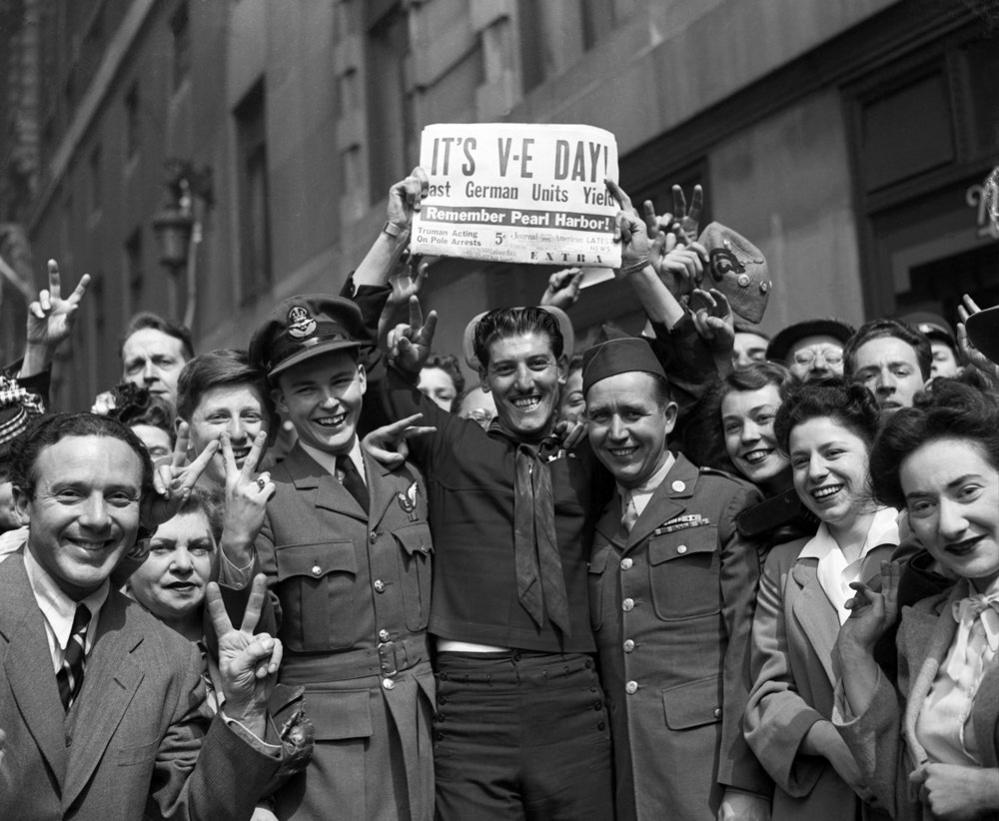
Crowds celebrate in London
There was dancing, music and street parties up and down the country, with many people dressed in the red, white and blue colours of the union flag.
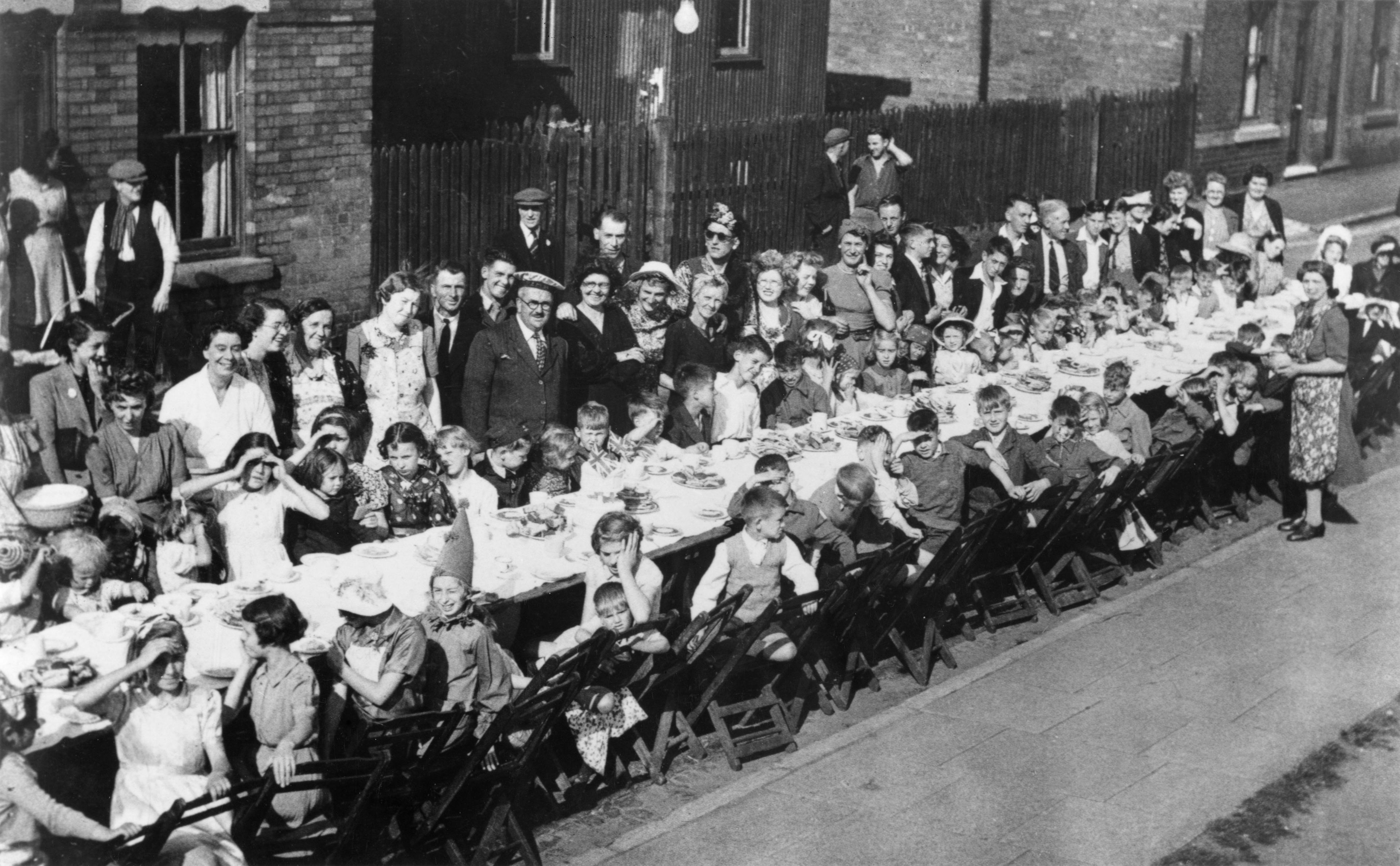
A party on Dunstan Street, Netherfield, Nottinghamshire
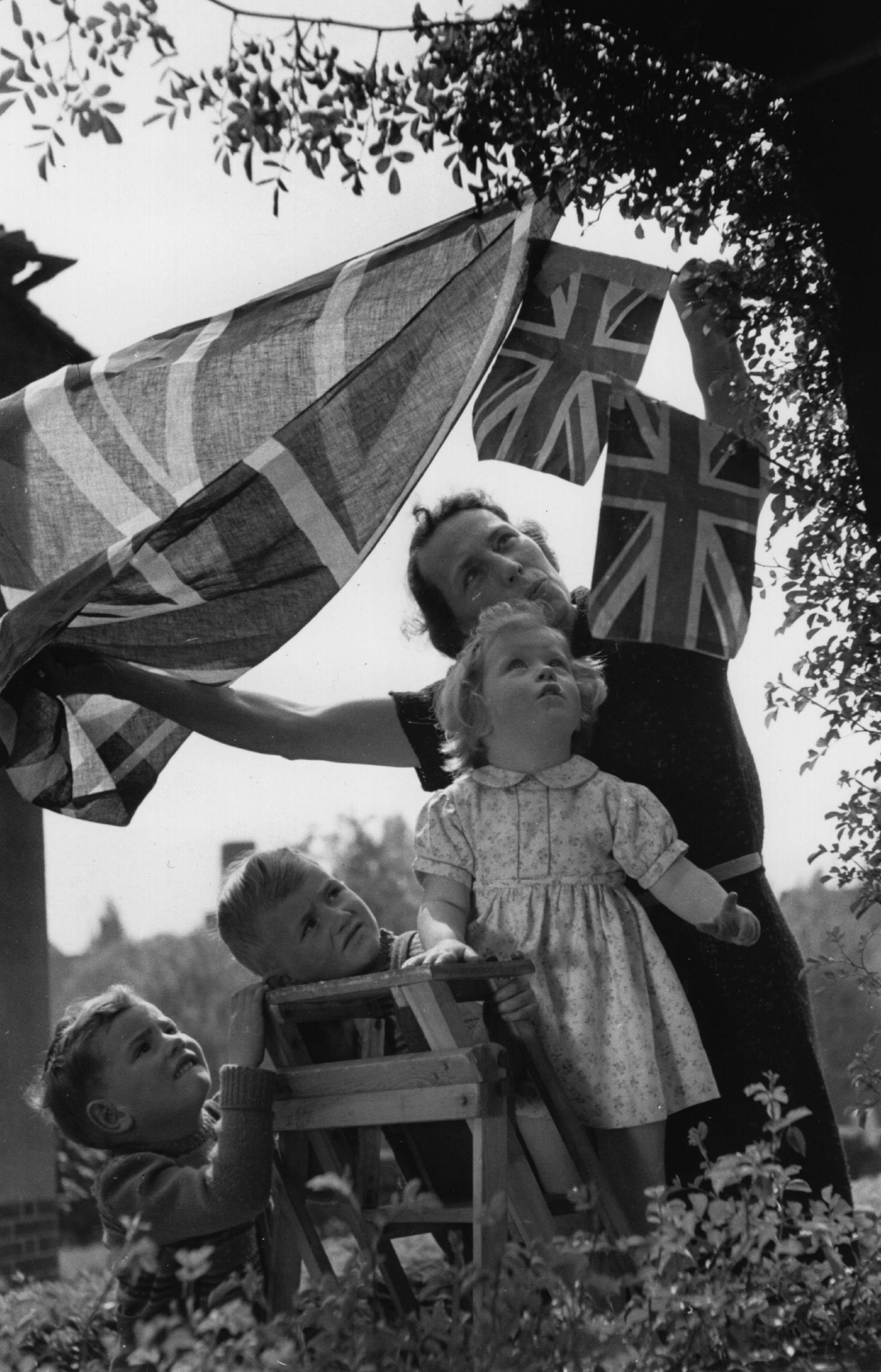
Children help put up bunting and flags in London
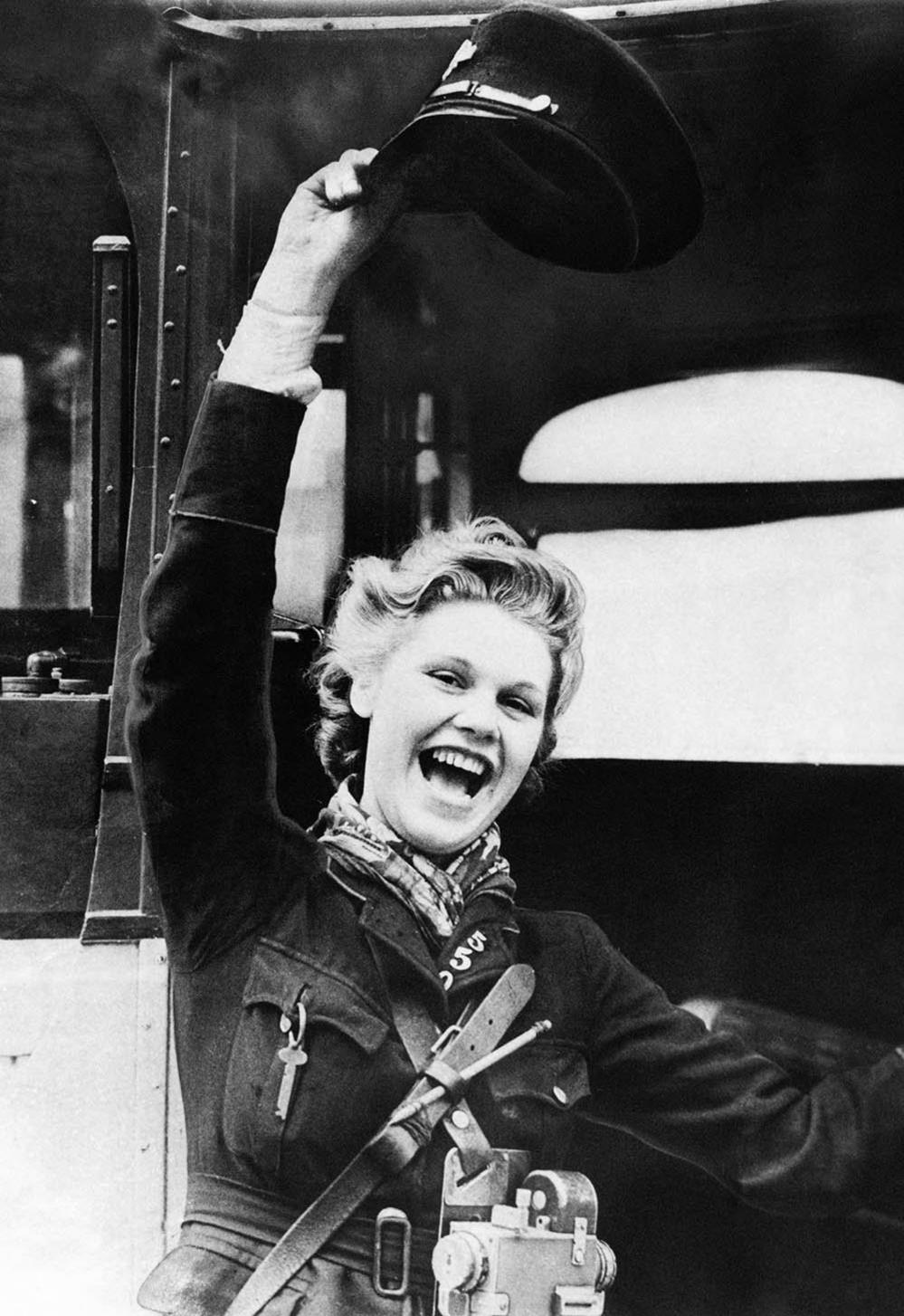
A bus conductor celebrates in Scotland
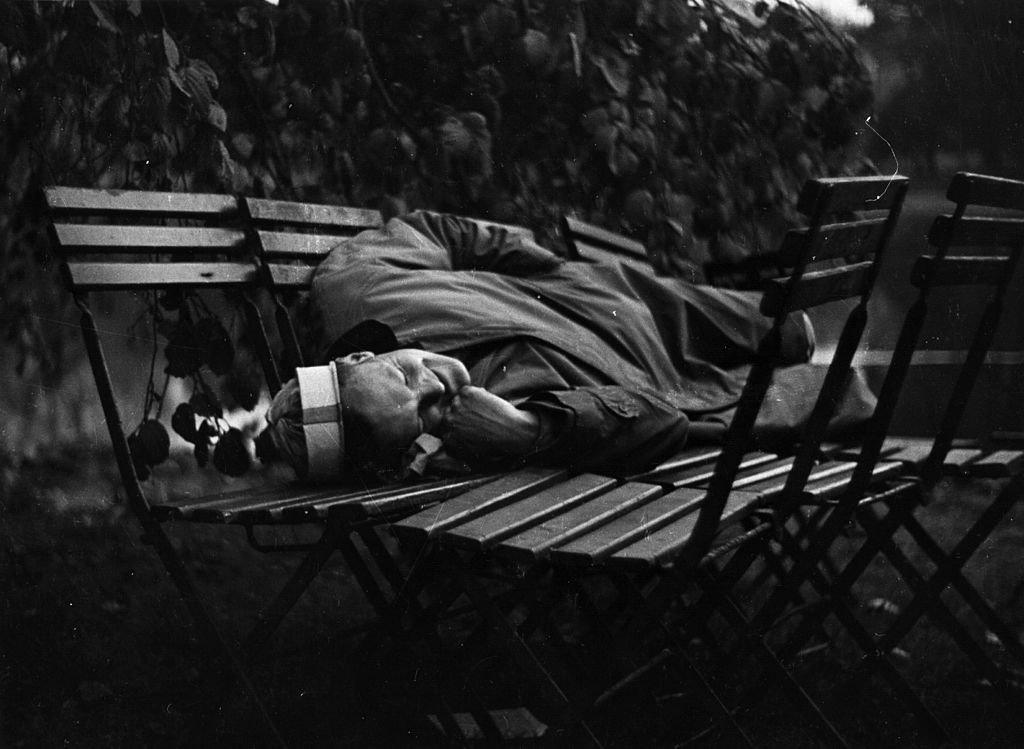
A reveller sleeps off the day's celebrations, in London
Huge crowds cheered from below as Churchill appeared on the balcony of Buckingham Palace with King George VI and the Royal Family, including the 19-year-old Princess Elizabeth.
The future Queen called it "one of the most memorable nights of my life".
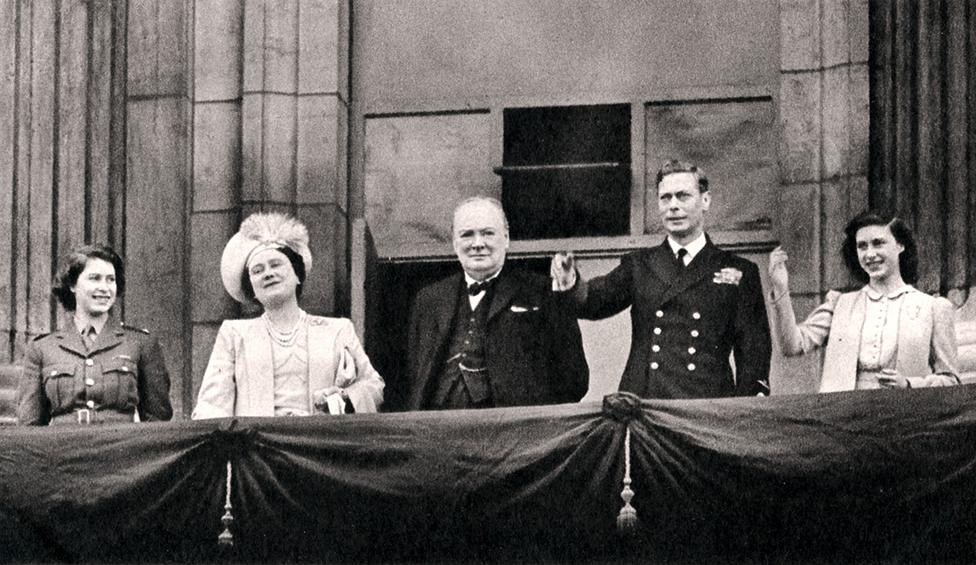
Princess Elizabeth, the Queen, Winston Churchill, King George VI and Princess Margaret wave to crowds from Buckingham Palace

King George VI, the Queen and Princess Elizabeth wave to cheering crowds

London's St Paul's Cathedral held 10 services, attended by thousands of people.
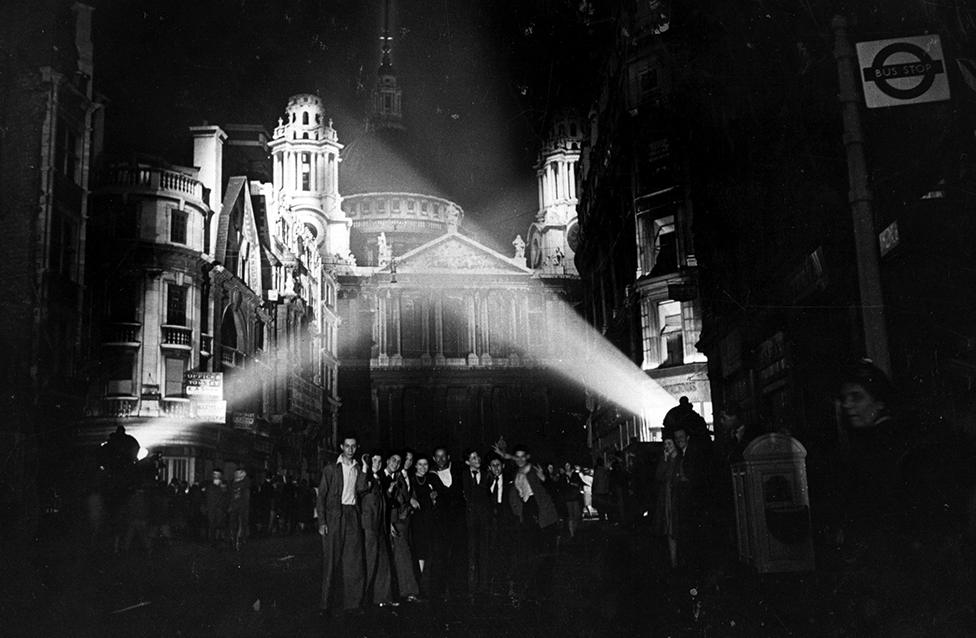
Floodlights illuminate the building tops near St Paul's Cathedral
And, in the evening, people even lit bonfires, which had been banned during the War.
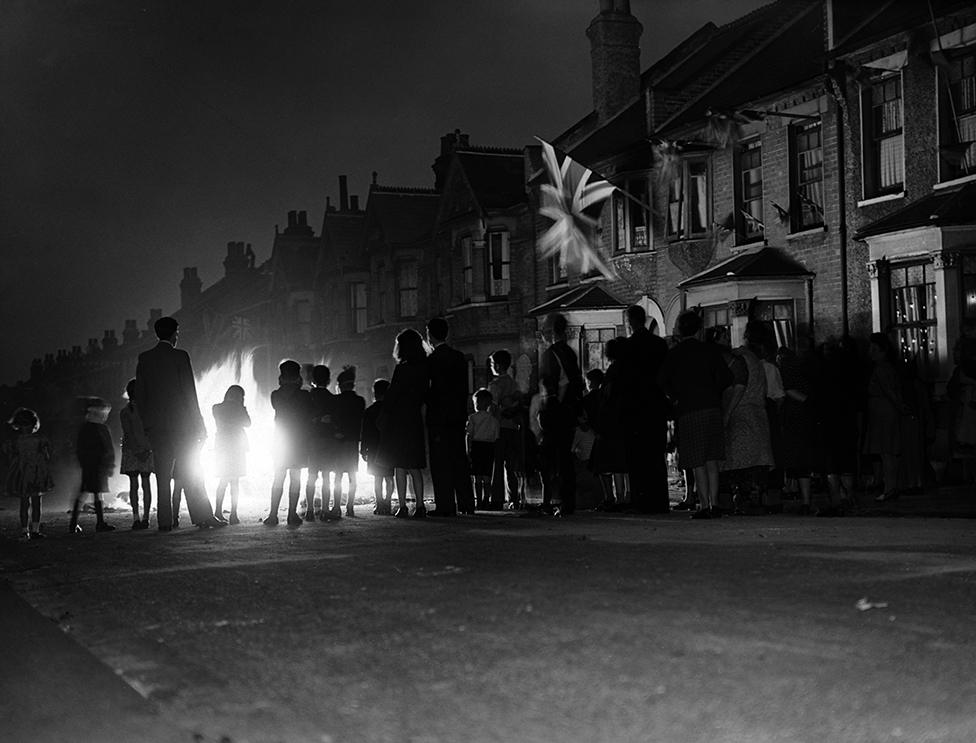
People gather around a bonfire in West Croydon, London
But VE Day did not mark the end of the World War Two, as fighting continued in the Asia-Pacific region.

A Dufaycolor colour transparency of Trafalgar Square, London
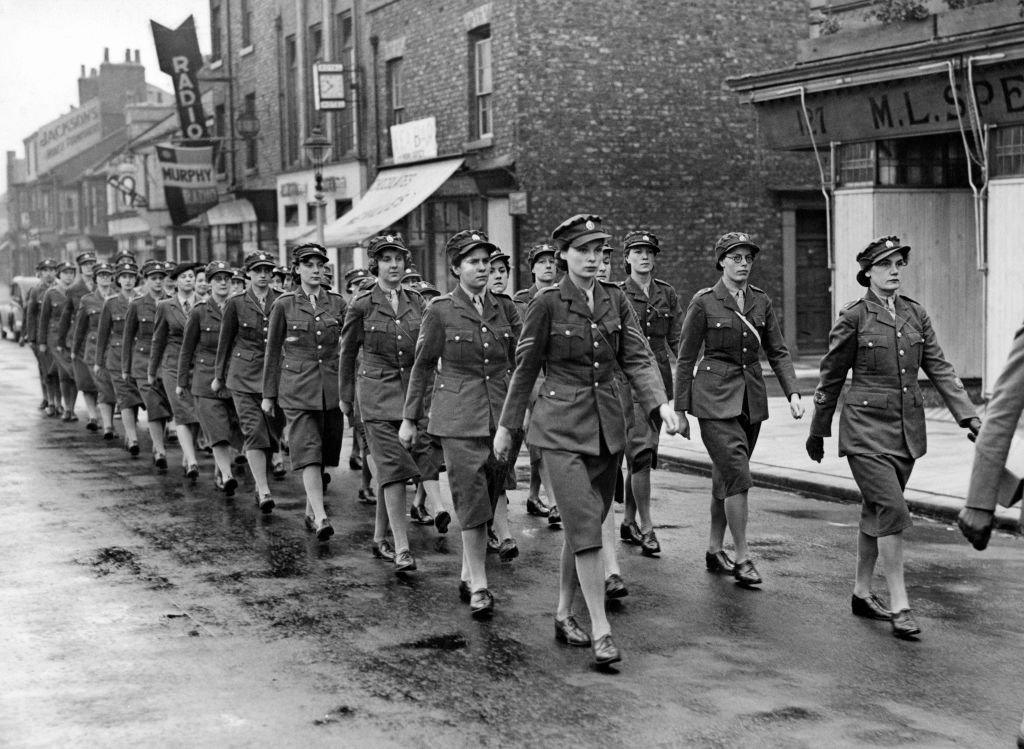
A parade in Teesside
Churchill said: "We may allow ourselves a brief period of rejoicing but let us not forget for a moment the toil and efforts that lie ahead."
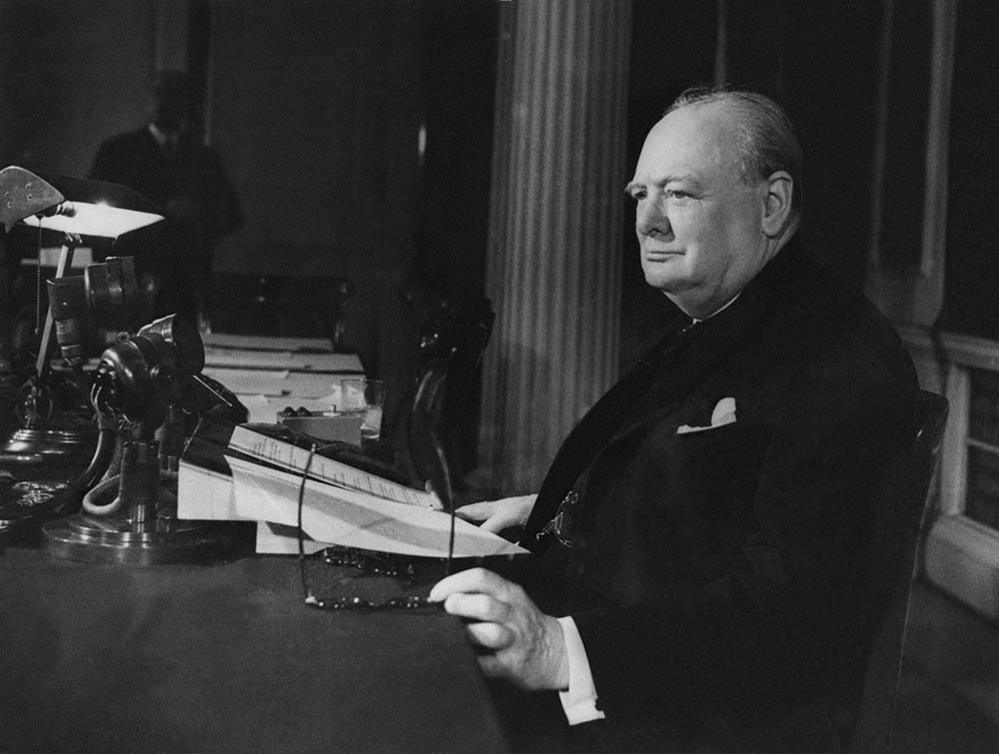
Winston Churchill makes his broadcast to the world, on 8 May 1945
Victory over Japan (VJ) Day came on 15 August 1945, following US atomic bombs being dropped on Hiroshima and Nagasaki.
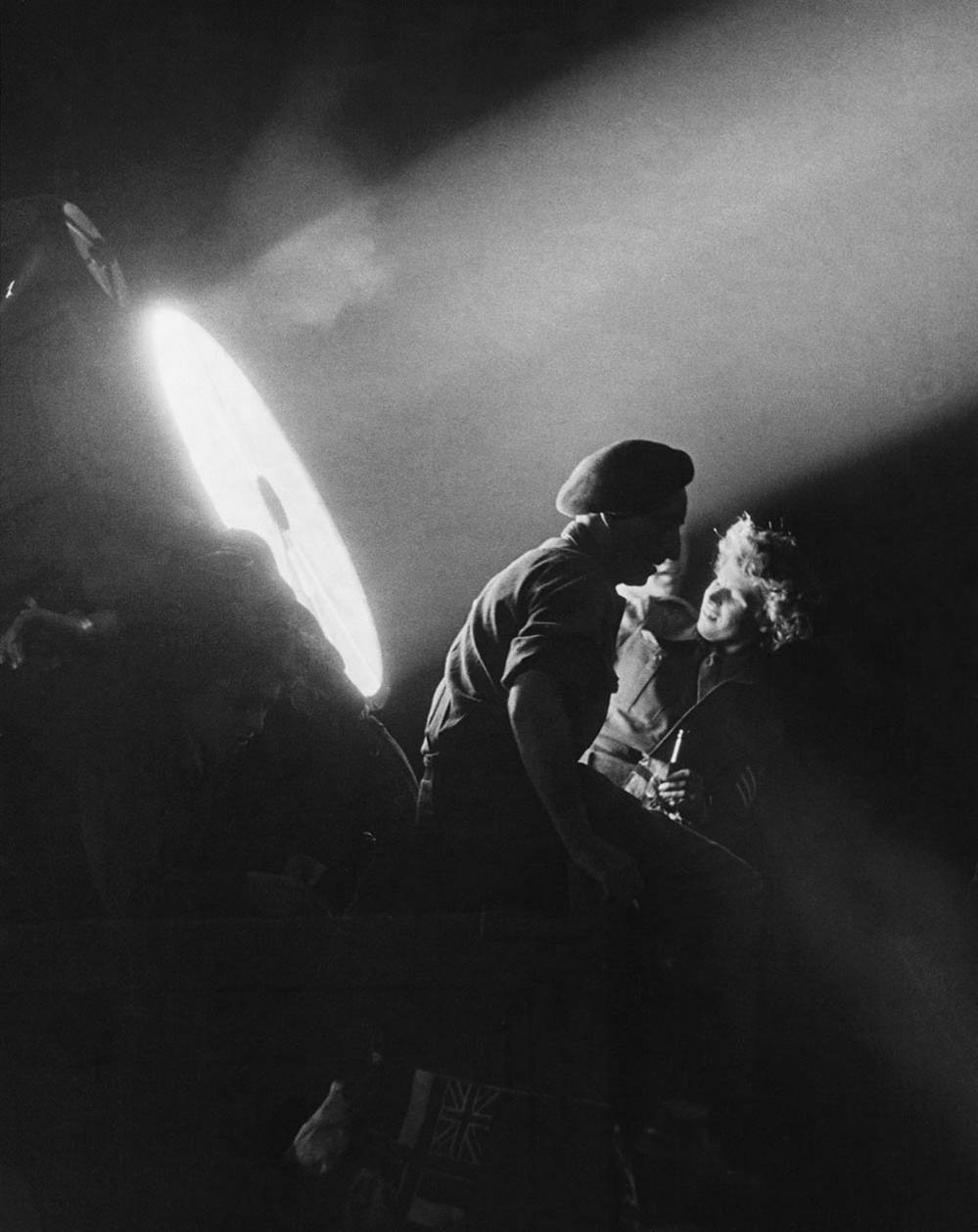
Revellers are caught in the beam of a floodlight in London

VE Day and VJ Day marked victory for the Allies but the lives of many survivors had been changed forever, as millions had lost loved ones.
And the British people had the task of rebuilding the nation, with food rationing lasting until 1954.
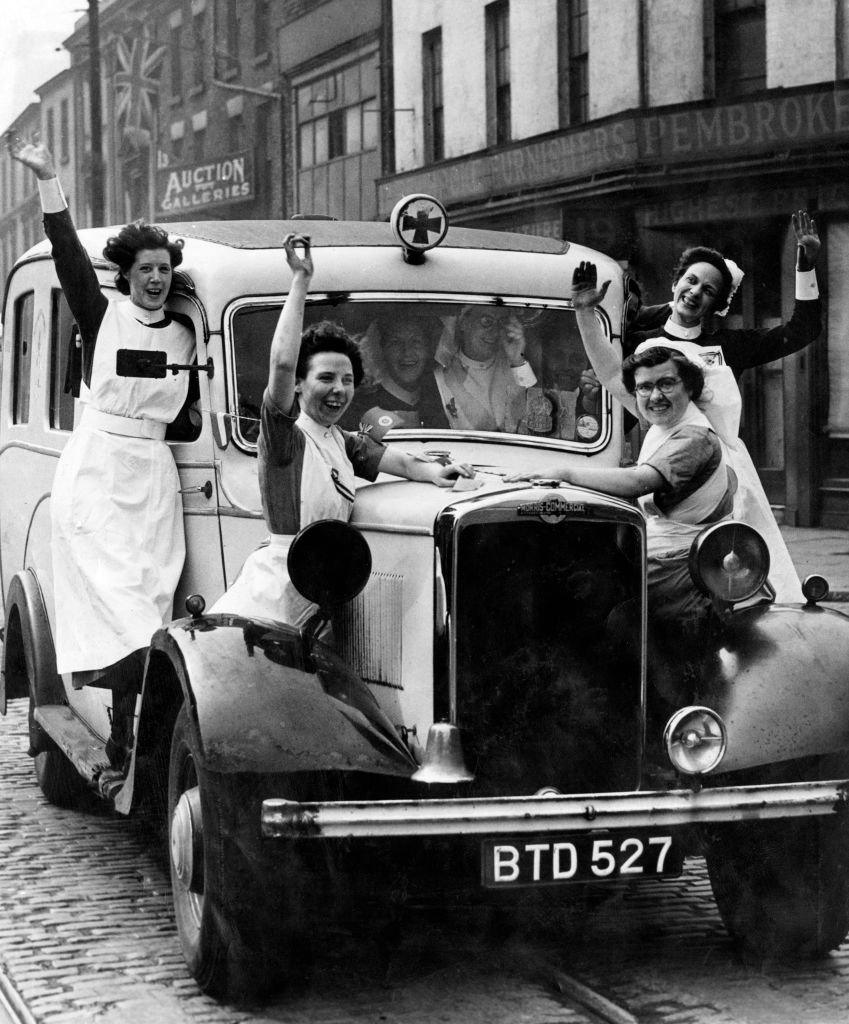
Jubilant nurses celebrate in Liverpool

All photographs subject to copyright.